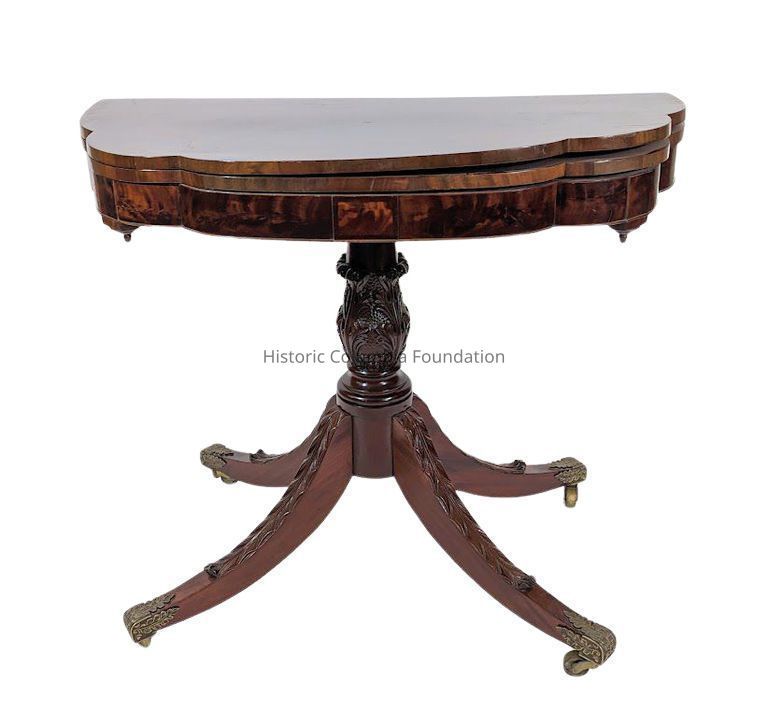Name/Title
Game TableEntry/Object ID
1972.112.1Description
Carved Duncan Phyfe-style folding card/game table. When opened, the top is scalloped. The upper portion of the pedestal has a large carved acanthus leaf design. It has large splayed legs with a carved leaf design on the top part of the legs. There are cast boots with a stamped oak leaf and acorn design resting on brass casters. The four corners of the skirt have small acorn drops. It has a hidden drawer in one side that is lined along the upper edges with pink and black decorative paper.Context
Game tables, also referred to as card tables, are typically rectangular tables with a flap that opens into a playing surface. Often, these surfaces are either covered in felt (baize) or velvet or have an inlaid playing board for games such as chess, checkers, or backgammon. When not in use, the tabletops were often folded up and the table was pushed flush against a wall. At the same time, the various hidden drawers were often used to store game pieces and cards.
Game tables first gained popularity in England during the late 17th century, under the reign of King Charles II (1630–1685), and only increased in popularity over the following two centuries. Designs for game tables became increasingly elaborate, many featuring adornments such as brass inlays, marquetry, carved feet, and intricate woodwork around the base and stem. As the middle class eventually grew wealthier, built larger houses, and enjoyed more free time, game tables became accessible to more than just the elite upper class. Because of their versatility and relatively compact size, most middle- and upper-class households were equipped with at least one game table during the Regency (c.1795–1837) and Victorian (1837–1901) eras.Made/Created
Date made
circa 1825 - circa 1835Dimensions
Height
18-7/8 inWidth
35-3/4 in
